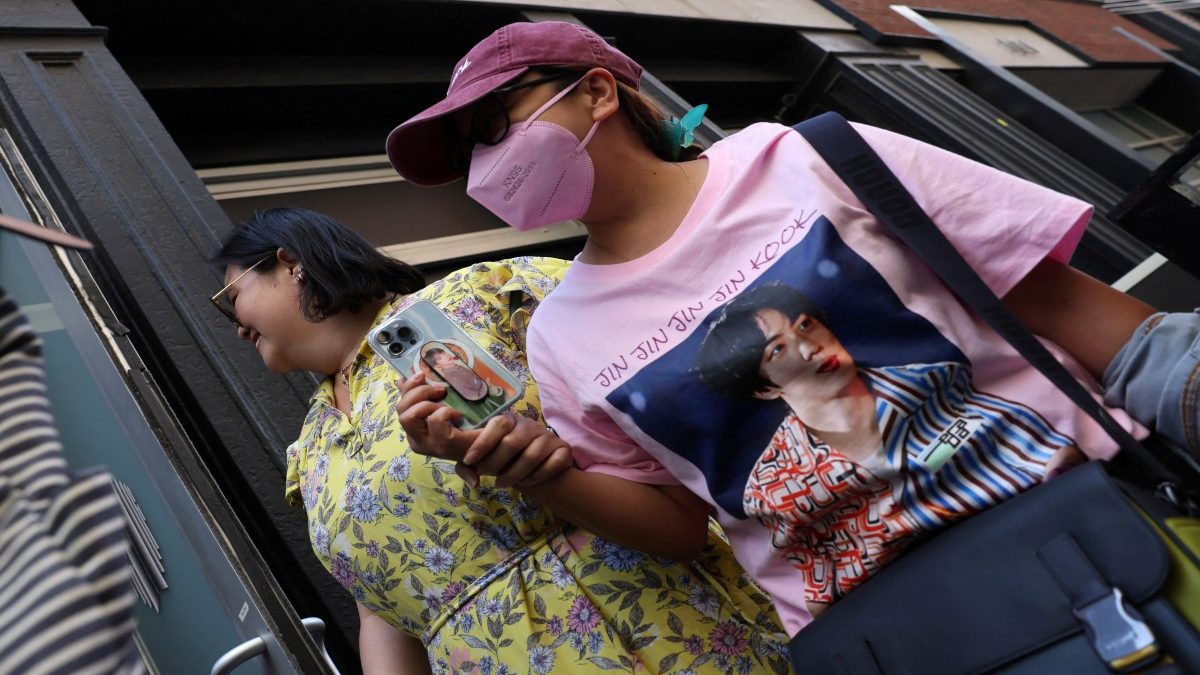South Korea’s creative rise came from its lowest point, after the Korean War of the 1950s, when it was emerging from abject poverty. However, by the turn of the century, it had come a long way. It was going to become an electronic success story, but that’s when South Korea suffered a second blow.
In the economic crash of 1997, Seoul was forced to ask the IMF for a bailout—still known as the “Day of National Humility.” It was a loan of 60 billion dollars. Collective sacrifices were made to pay off the debt. That was an emotional low point, but then Seoul made up its mind to turn things around.
South Korea needed “national rebranding,” and the government took cultural identity and turned it into an exportable commodity.
“Hallyu” (Korean wave) was born—the phenomenal growth of Korean pop culture—from K-pop to K-beauty.
Today, culture is one of South Korea’s largest exports. It has helped the nation become Asia’s fourth-biggest economy, cementing its credentials as a cultural superpower.
Pop culture
Gangnam Style wriggled its way across the world, making history as the first YouTube video with one billion views.
This breakthrough smoothed the road for K-pop, and today, the industry is massive. Bands like BTS and Blackpink have conquered the world. BTS reportedly adds about four billion dollars to the South Korean economy each year. K-pop is practically the biggest part of its content industry, which hit a record high in 2021 with a value of 12.4 billion dollars.
It dwarfed earnings from home appliances and vehicles, for which South Korea was once popular.
Korean dramas and films are big business as well. Four years ago, “Parasite” won an Oscar. Three years ago, “Squid Game” became the most watched show on Netflix.
Impact Shorts
More ShortsNetflix is investing 2.5 billion dollars in South Korean projects. Disney and Apple TV are commissioning more Korean shows.
Food and cosmetics
Korean cuisine is penetrating global markets. It is worth 77 billion dollars. Meanwhile, K-beauty is the latest rage. Hordes of tourists are flocking to South Korea to buy cosmetics like snail mucin and face masks. The k-beauty market is expected to be worth 18 billion dollars in 2030.
South Korean culture is a big hit, and it has achieved that through a near-perfect marriage between public and private effort after the IMF crisis.
Kim Dae-jung, the then Korean president, threw money at the content industry and laid its foundation. But just as the government pushed funding, private players stepped in and poured billions of dollars into creative industries, and this boosted the industry.
Literature
The Korean wave shows no signs of stopping. Many say that the next big thing is literature. There is a growing demand to learn the Korean language. So South Korea wants to tap into this. It wants to export stories and share them with the world.
Every nation has powerful stories; most nations would want to share them; the key is to figure out how. As they say, heroes are made by the path they choose, not the powers they are graced with.
Views expressed in the above piece are personal and solely those of the author. They do not necessarily reflect Firstpost’s views.
)